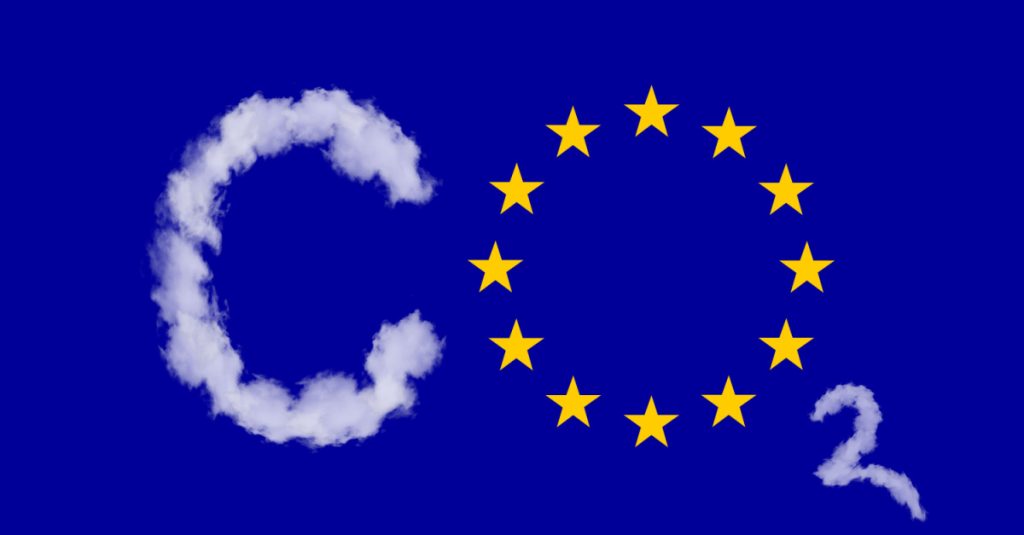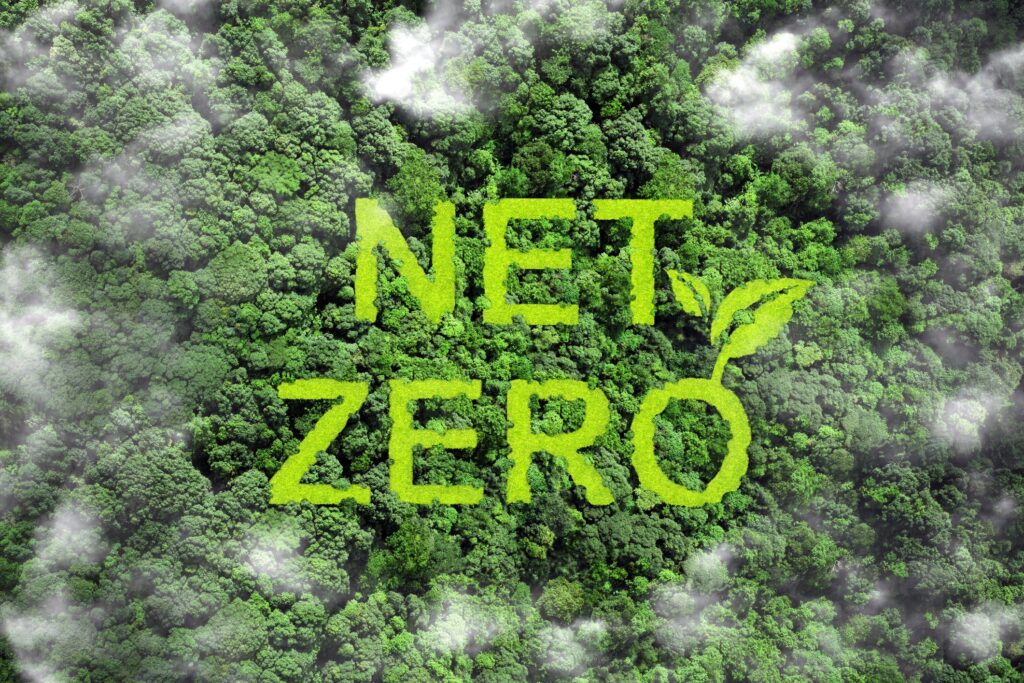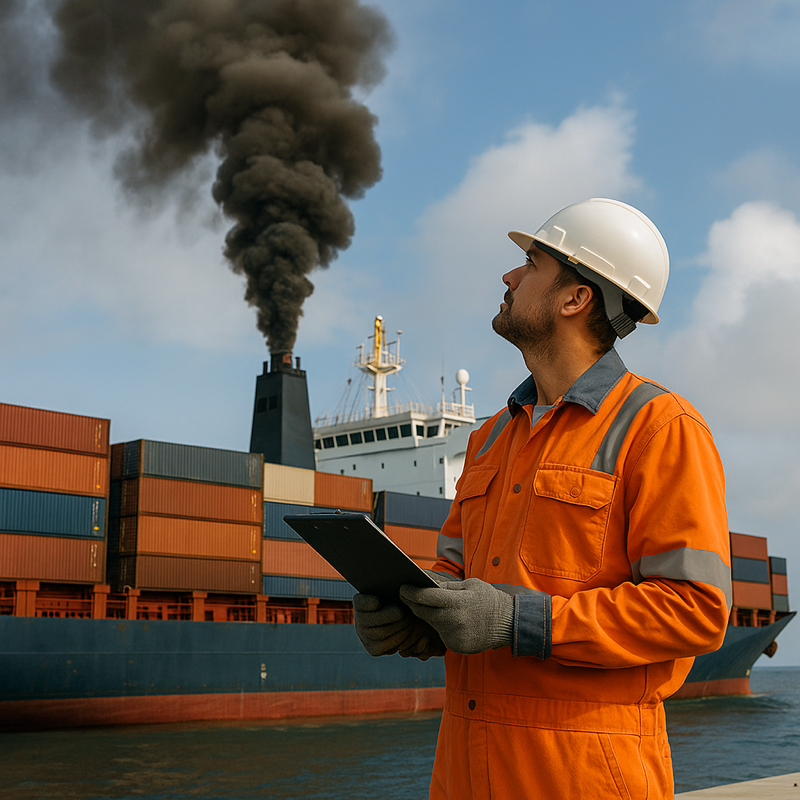Bringing ocean shipping under the regulatory umbrella of the European Union’s Emissions Trading Scheme (EU ETS) has been in development for many years, giving carriers and other stakeholders plenty of time to prepare for the new greenhouse gas rules before they go into effect. Plenty of time, that is, in a perfect world. Anyone in the supply chain knows that solving for constant logistics disruptions has taken a toll over the last few years. When the calendar turns to January 1, 2024, ocean vessels that enter any European Union port will be subject to a cap-and-trade policy on their GHG emissions. (For the first two years, only carbon emissions will be subject to policy. In 2026, nitrous oxide and methane emissions will fall under the policy.)
This new regulation is not a supply chain chokepoint to solve. It’s an opportunity to create a healthier, sustainable shipping and supply chain operation.
A September 2022 report in the Marine Policy journal laid out the issue in stark terms: “Annual greenhouse gas emissions from maritime transport increased from 978 million tons to 1.076 billion tons from 2012 to 2018. As the demand for maritime transport continues to grow, emissions are predicted to increase by 90–130% by 2050 compared to 2008.”
MIT pegs the global emissions from freight transportation at 8 percent of total greenhouse gas emissions. And that’s just the physical act of moving goods around the world. Taking port and warehouse emissions into account adds another 3 percent to that total.
With the importance of maritime transportation continuing to increase in an ever more globalized economy, regulators are targeting maritime emissions with a renewed zeal. According to the International Transport Forum’s Transport Outlook 2023, this is a step in the right direction: “Carbon pricing can encourage a move away from the most carbon-intensive fleets and make low-carbon fuels more cost-competitive,” the ITF found.
Supply chain sustainability is a hot topic, but vague plans to reduce emissions without clear-cut goals amount to corporate greenwashing. The EU ETS regulations have real teeth. The aim is swift GHG emissions change from one of the top groups of freight transportation emitters.
This won’t be easy. Ocean shipping, and freight transportation in general, is heavily reliant on fossil fuels. Add to this the ITF’s finding that freight volume will grow three-fold by 2050, and it’s not challenging to see the roadblocks to supply chain sustainability. The path to logistics decarbonization cannot wait for or rely solely on ocean carriers’ actions. Shippers must take immediate action to offset and mitigate their GHG emissions. Moving the needle on supply chain sustainability requires that everyone in the supply chain works together toward a greener future.
EU ETS summary: What is EU ETS?
In its most basic form, an EU ETS summary could be as simple as “a cap-and-trade program to incentivize reduced emissions.” Reducing such global ocean carrier GHG emissions is, of course, anything but simple.
On January 1, the European Union will start chipping away at the percentage of greenhouse emissions from freight transportation by focusing on ocean carriers, putting into practice a cap-and-trade, market-based mechanism meant to drive down emissions. On the first day of 2024, ocean carriers beginning or ending their journey at European ports, or operating in European waters, must purchase carbon credits for each ton of GHG they emit. The burden won’t hit all at once: The regulation covers 40 percent of a carrier’s emissions in 2024, with that number rising to 70 percent the following year. In 2026, EU ETS regulations apply to 100 percent of emissions.
The rules apply to ships weighing more than 5,000 gross tonnes. It’s not like these rules are coming out of left field: Qualifying ships have had to track carbon emissions since January 1, 2018. The self-monitoring will continue even after January 1. Carriers will monitor their own emissions and pay European regulators to offset any GHG emissions over the threshold. This monitoring will be subject to audit.
Non-compliance could reportedly be cause for denial of entry into the European Union. For the next two years, carriers will likely be fined for unaccounted emissions.
EU ETS 2024: What Will January 1 Mean for Logistics Professionals?
When the calendar turns to 2024, routing ocean cargo through Europe will become more expensive for every major ocean carrier. To defray the costs of the new supply chain sustainability regulation, Hapag Lloyd, Maersk, and other ocean carriers have already begun announcing European shipping surcharges. Costs for shippers will go up in the near term.
For carriers, emissions-reduction solutions are a long game. Slowsteaming can be implemented to immediately reduce emissions while carriers look into the use of alternative fuels or other methods that could reduce GHG emissions.
Carriers can also sell unused credits on the market, turning compliance into a revenue stream in the near term. In the long term, carriers and shippers need guidance, as soon as possible, from third-party experts on how to efficiently shift their operations toward a greener existence. Adequate preparation will help decrease EU ETS expenses when the European Union starts in 2026 to require that carriers pay to offset 100 percent of their GHG emissions.
Carriers and shippers need help to understand where practical operational solutions can be implemented that mitigate GHG emissions in the supply chain.
To Navigate EU ETS, Accountability is Key
The EU ETS centers around marine GHG emissions data, vital for tracking and managing supply chain sustainability and decarbonization goals. Accurate and transparent data reporting is crucial, as carriers are fully accountable for emissions reporting, and non-compliance can lead to severe repercussions. However, compliance doesn’t require becoming a GHG emissions expert. This is where Greenabl steps in, offering a robust digital platform backed by first-rate research and consulting support. Greenabl simplifies data reporting and assists in creating emissions-reduction plans, guiding supply chain participants towards sustainable shipping.
Greenabl’s approach includes pragmatic mitigation, where consultants aid in implementing cost-effective operational solutions to reduce supply chain emissions. Their reporting and analytics tools provide real-time insights into specific impacts and monitor decarbonization progress. By leveraging the GLEC Framework, the only recognized method for harmonized calculation and reporting of logistics GHG footprints across all carriers and modes, Greenabl ensures consistent, activity-based methodologies. Additionally, Greenabl offers certified carbon credits, carefully vetted and procured using Gold Standard and VERRA ratings, allowing clients to select projects that align with their needs while ensuring high-quality offsets.
Streamlined Data Collection
Operating from a single point of truth eliminates all confusion regarding measuring and reporting. When shippers are dealing with multiple inputs and even reporting metrics, it’s easy to get lost in the steam of data. Streamlining reporting is crucial to create true accountability. Only then can meaningful greenhouse gas emissions reductions in the supply chain occur.
Centralized data collection leads to simplified reporting, but the data has to be transparent with measurement metrics you can trust.
Accurate Reporting
In the context of the EU ETS, where accurate and transparent reporting of GHG emissions is paramount, it’s essential to collaborate with a specialized third-party technology provider. This is where Greenabl emerges as a strategic partner. Greenabl offers a tailored data stream that not only provides real-time access to GHG emissions levels but also enables effective tracking of decarbonization efforts. Its platform is designed to prevent disorganized or missing data, which could lead to shippers and carriers paying more than necessary due to the European Union’s reliance on self-reporting.
While the EU ETS primarily targets maritime freight, shippers must adopt a comprehensive approach to manage GHG emissions across their supply chain. Greenabl’s use of the GLEC Framework positions it as an ideal third-party solutions provider. The GLEC Framework is recognized as the best-in-class methodology for consistent emissions reporting across all modes and carriers. By partnering with Greenabl, shippers can benefit from its proven measurement framework, ensuring not only compliance with EU ETS standards but also fostering a broader commitment to sustainable supply chain practices.
Guidance and Consultation
Carriers and shippers are not in this alone. Supply chain sustainability experts are ready to help create tailored solutions to reduce GHG emissions while optimizing spend. Consultants at these companies serve in an educational role, helping users understand evolving supply chain sustainability regulations and carefully weigh operational solutions that help achieve each customer’s freight transportation emissions reduction goal. Expert advice and support are invaluable when navigating complex regulations.
EU ETS regulations shouldn’t be a shipping roadblock
Shipping to and from Europe will become a bit more costly in January, but the EU’s cap-and-trade GHG emissions policy is a needed step in increasing the adoption of supply chain emissions reduction technology. With the regulatory push, shippers and carriers are now feeling more urgency in seeking out technology solutions that allow them to maintain compliance by measuring GHG emissions and beginning the process of emissions mitigation. Through streamlined data collection, accurate reporting and the use of expert sustainability guides, implementation of the EU ETS can be merely a short-term adjustment on the path of achieving greener freight shipping.
Decarbonization in the supply chain is a shared responsibility, and every supply chain user should shoulder some of the financial burden of creating a better shipping future. By working toward decarbonization with a knowledgeable third party, carriers and shippers can make sure they are not caught paying more than their fair share.
To get started on your sustainability journey, schedule a call with Greenabl today.


